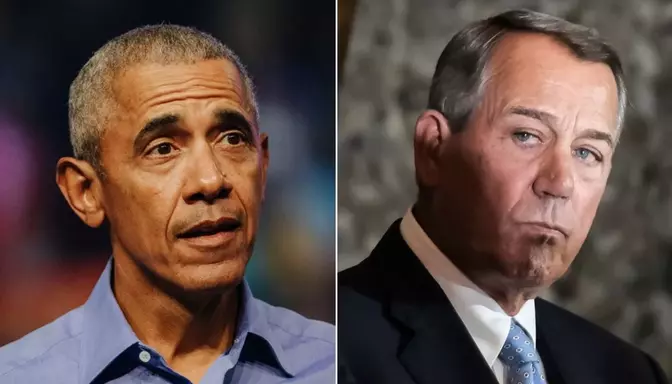Diksia.com - As the nation teetered on the brink of defaulting on its obligations, a familiar scenario unfolded in 2011.
The Republican House speaker, driven by conservative factions within his party, demanded substantial spending cuts.
Meanwhile, the Democratic president, Barack Obama, engaged in negotiations to prevent a fiscal catastrophe.
No, we haven’t jumped to 2023 just yet. This was the reality in 2011 when Obama, together with then-House Speaker John Boehner, agreed upon a debt ceiling deal.
The agreement entailed over $900 billion in immediate spending cuts and deficit reduction measures, alongside the establishment of a joint congressional committee tasked with identifying an additional $1.2 trillion in necessary belt-tightening measures.
Remarkably, the situation President Joe Biden, Obama’s former vice president, faces today bears a striking resemblance.
He and House Speaker Kevin McCarthy, a Republican, are tirelessly urging their respective parties to promptly approve their agreement to address the pressing debt limit issue before the United States risks defaulting on June 5.
Present-day House Republicans would be wise to study the outcomes of their predecessors’ hard-fought deal.
It became evident that things did not unfold according to plan, as a significant portion of the proposed reductions was eventually scaled back through a series of subsequent bipartisan bills.
“After Congress delved into the intricacies of the programs and the required cuts, they came to the realization that such deep reductions were unattainable,” explained Brian Riedl, a senior fellow at the right-leaning Manhattan Institute who played a key role in the 2011 negotiations.
What Transpired Following the 2011 Deal
The joint committee formed in 2011 faced the daunting task of identifying additional deficit reduction measures to offset the approved $1.2 trillion increase in the debt ceiling.
Failure to meet this objective would trigger automatic spending cuts, known as sequestration, that would gradually rein in projected expenditure growth over the next decade.
Unfortunately, the committee fell short of its mandate, leading to the implementation of the spending caps.
However, Congress subsequently diluted the deficit reduction provisions by repeatedly increasing the caps on discretionary spending in subsequent years.
It is worth noting that lawmakers also included other measures to offset some of these changes.
John Diamond, director of the Center for Public Finance at Rice University’s Baker Institute, described how “we gradually unwound this bill, piece by piece.”
Ultimately, roughly $1.5 trillion of the agreed-upon $2.1 trillion in spending cuts materialized, according to Riedl.
This included $855 billion in cuts to discretionary spending over the span of a decade.
Various agencies and programs, such as defense, education, justice, and the Internal Revenue Service, felt the impact of these reductions.
Additionally, the deal entailed a 2% reduction in payments to Medicare providers as part of the broader mandatory spending program cuts.
The Deal at Hand
Fast forward to 2023. The depth of spending cuts emerged as a major sticking point in resolving the debt ceiling impasse.
Earlier this year, the Biden administration resisted returning spending to fiscal 2022 levels, a provision that Republicans included in their debt ceiling bill. Meanwhile, McCarthy’s team remained steadfast.
In the end, the recently announced deal entails a scaling back of non-defense discretionary spending for fiscal year 2024, with agreed-upon appropriation adjustments largely compensating for the difference.
Non-defense spending would experience a mere 1% increase in fiscal year 2025.
A critical distinction between 2011 and the present lies in the fact that the spending caps back then served as a backup plan, as Warren Payne, a senior advisor at Mayer Brown, a prominent law firm, noted.
“People operated under the assumption that the spending caps would never actually come into effect,” Payne explained.
Now, the spending caps rank among the GOP’s top priorities, and McCarthy managed to avoid constraining defense funding and raising taxes, as occurred in 2011.
However, even if Congress passes this debt ceiling package, House Republicans may encounter challenges adhering to the spending caps when it comes time to appropriate funding for federal government operations later this year.
“It is reasonable to expect that, in the end, we will face the same pressures to increase spending,” predicted Diamond.
Indeed, history has a way of repeating itself, and the complex dance between spending cuts, deficit reduction, and political maneuvering continues to shape the nation’s financial landscape.






